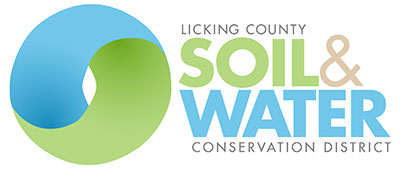October 23, 2017, By Chris Kick
MILLERSBURG, Ohio — Farmers, business owners and anyone else who would like to be proactive about conservation within the Muskingum Watershed have an opportunity to purchase “conservation credits” that can be used to promote their commitment to stewardship.
The credits are calculated and made available as a result of the total nutrients and sediments saved through the Muskingum Watershed cover crop program. Each credit costs $10 and is about the equivalent of what it costs to save one ton of sediment, one pound of phosphorus, and two pounds of nitrogen.
The project is being organized in cooperation with the Muskingum Watershed (SWCD) Joint Board, which is separate from the Muskingum Watershed Conservancy District.
The Muskingum Watershed is large — covering more than 8,000 square miles or about a fifth of the state of Ohio.
The value
Jane Houin, fiscal and education specialist at Holmes Soil and Water Conservation District who is serving as marketing coordinator of the new program, said the credits do not count toward any regulatory or government program and are not part of a nutrient trading program.
What the credits provide, however, is a way of calculating and verifying one’s own conservation investment, and funding that is guaranteed to provide future conservation.
“What I think is valuable is that it actually places a value on the conservation that farmers and agriculture are doing,” Houin said. “A lot of time we see a lot of blame being placed — this places a value.”
Houin said the donors of the funds can direct them to a specific county soil and water conservation district, or to be used across the entire watershed.
She views the work that’s been done so far as a commodity or even a crop — something that holds value and is marketable.
“It’s similar to a crop in that we produced these conservation savings,” she said. “We’re going to take the sale of those (conservation credits) and plant our next conservation crop.”
Sustainability goals
Another benefit for businesses is the opportunity to use the credits toward meeting their own environmental sustainability goals.
The amount of available credits varies by county, based on the amount of sediment and nutrients that county saved.
Holmes County, for example, saved 16,722 tons of sediment, and generated the same number of credits. Carroll County saved 2,839 tons of sediment and has that many credits.
About 2,000 credits have been sold so far, but Houin believes that number will increase as more people learn about the program.
The funds generated from buying the credits will be administered to the counties and the watershed, by the Muskingum Watershed Joint Board. Any programs funded by the purchase of credits have to follow standards of the USDA’s Natural Resources Conservation Service, Houin said.
To learn more about the program, or to make a purchase, visit www.credits4conservation.com, or call Jane Houin at 330-674-2811.



